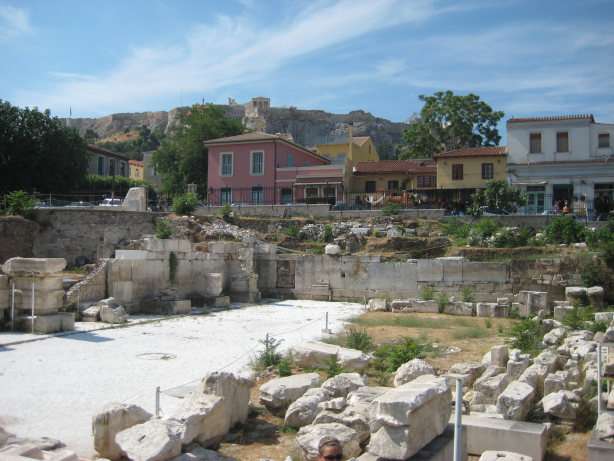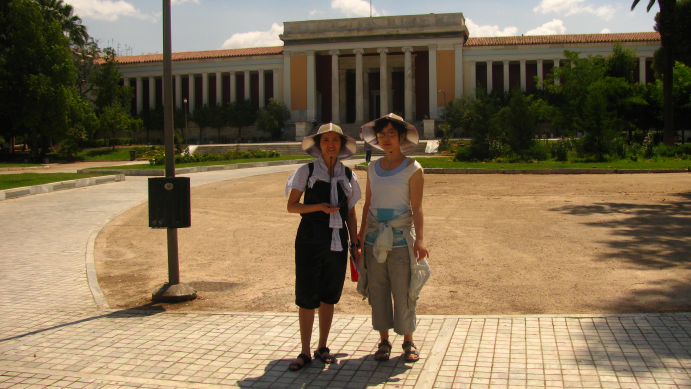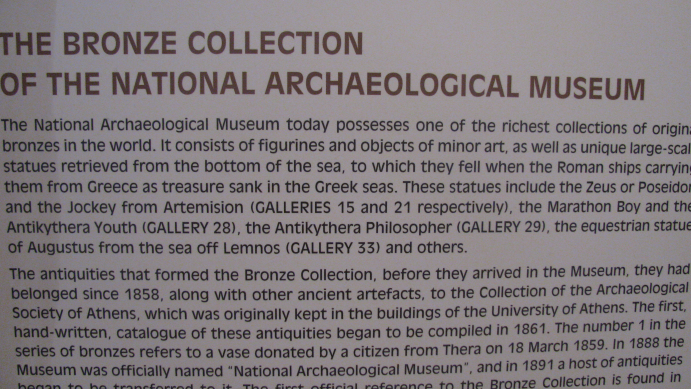We self-guidedly visited Greece and Turkey for 19 days back in June of 2009. In retrospect, it was a trip filled with many memorable adventurous experiences and laughters. I understand deeper the immortal words of Dr. Seuss, "You have brains in your head. You have feet in your shoes. You can steer yourself any direction you choose." Often time, in our mundane daily life, we seem to easily lose the focus of life and can't seem to steer ourselves to where we want to go without procrastination. Whenever I travel, my sense of direction is intensified. I will re-steer my direction the moment I sense the lostness until I reach the destinaion - the very purpose of having my brain and feet.
Our itinerary could be found here. Together we visited Athens, Meteora, Patmos, Mykonos, Santorini, Samoe, Kusadasi, Ephesus, Pamukale, Cappodocia, Istanbul, and a 15-hour+ transit in Zurich.
Athens, like Rome, both an ancient and modern city. The old and the new mingled together.
 The modern Athens is on the left, the ancient on the right.
The modern Athens is on the left, the ancient on the right.
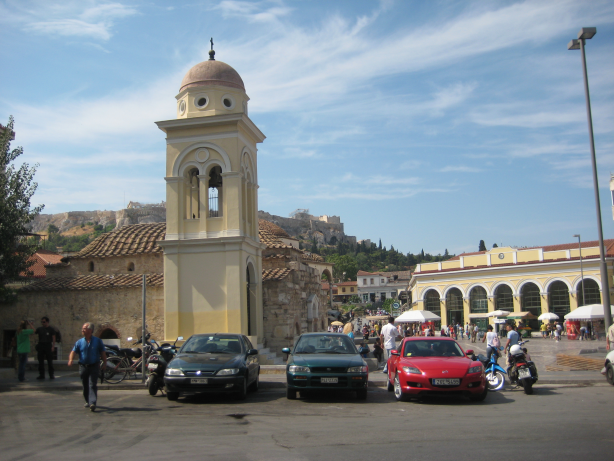
From here we began our exploration of the ancient Athens.
The Roman Agora
It is right next to the metro station of Monastiraki.


 The Tower of the Winds. (This picture is from the google.image site. Mine was not as clear as this one.) This is octagonal tower Was built in the first half of 1BC by the astronomer Andronicos. The structure features a combination of sundials, a water clock, and a wind vane. the name of the structure relates to the representation of eight winds, North, Northest, East, Southeast,, South, Southwest, West, and Northwest. The usage of this tower varies from the various period of times. It was used as a church, temple, and tekke of the Dervishes.
The Tower of the Winds. (This picture is from the google.image site. Mine was not as clear as this one.) This is octagonal tower Was built in the first half of 1BC by the astronomer Andronicos. The structure features a combination of sundials, a water clock, and a wind vane. the name of the structure relates to the representation of eight winds, North, Northest, East, Southeast,, South, Southwest, West, and Northwest. The usage of this tower varies from the various period of times. It was used as a church, temple, and tekke of the Dervishes.

THE ANCIENT AGORA
In the history of this city, this area was occupied without interupption since 3000BC as a burial and residential site. In early 6th BC, it was developed into a marketplace and the heart of political, commercial, administrative, social activities, and religious and cultural center in early 6th BC.
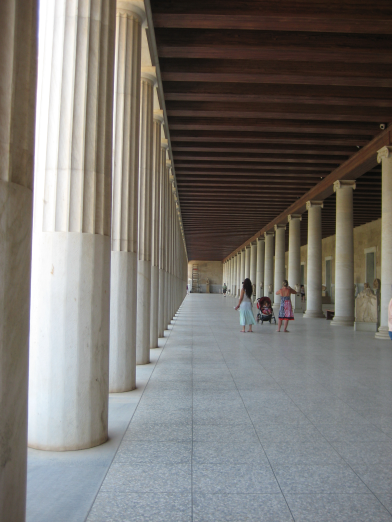

Acropolis
Slowly we hiked up to Acropolis through the stone-cut steps, hoping to get a glimpse of the old glory of the Acropolis. History always humbles me. No man-made cities can stand gloriously forever. None. I was rather amused by what I saw at my last visit at Dubai, a city that strives recklessly to build everything in the superlative terms, such the tallest, the largest and etc. Try she may, as time moves, whatever may be glorious today will soon be a pile of ruins tomorrows. Such is the law of life. Like it or not.
The sun got hotter by the minute, but that didn't deter the crowd from climbing up. Our exposed skin was hot red by now. Our made-in-china big hat was helpful.

The scaffolded 2.5K year old Pathenon may not show it old glories, but definitely reveals its fragility and in need of any conservation care it can get. The sculptural decoration has been preserved in fragments only. They are scattered among some European musuems, of which British Musuem in London, due to Lord Elgin, probably has the most collection.


The other must-see in Athens is the National Archaeological Museum - contains probably the richest collection of Greece artifacts. One could easily spend the whole day there, if not more.
My take-away:
A city that taught me to reverence history and to avoid investing my life into building something grandeur here on earth as there is nothing as everlasting on this side of heavens.
Two-full days in Athens is enough to cover the ancient sites and the National Archelogical Museum.
blog comments powered by Disqus


